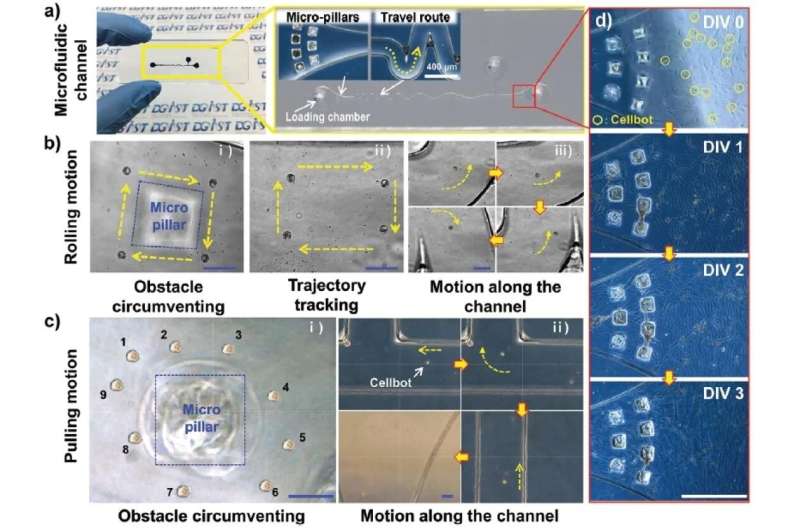
The joint research team of Professor Choi Hongsoo at Robotics Engineering, DGIST, a senior researcher Jinyoung Kim from DGIST-ETH Microrobotics Research Center, and the research team of Professor Sung Won Kim at Seoul St. Mary’s Hospital of the Catholic University, made a breakthrough for the improvement of the therapeutic efficacy and safety in stem cell-based treatments.
The team developed a magnetically powered human nuclear transfer stem cells(hNTSC)-based microrobot and a method of minimally invasive delivery of therapeutic agents into the brain via the intranasal pathway. And they also accomplished transplanting the developed stem cell-based microrobot into brain tissue through the intranasal pathway that bypasses the blood-brain barrier. The proposed method is superior in efficacy and safety compared to the conventional surgical method and is expected to bring new possibilities of treating various intractable neurological diseases such as Alzheimer’s disease, Parkinson’s disease, and brain tumors, in the future.
The limitation of stem cell therapy is the difficulty in delivering an exact amount of stem cells to an accurate targeted location deep in the body where the treatment is with high risk. Another limitation is that both efficacy and safety of the treatment are low owing to a large amount of the therapeutic agent loss during delivery, while the cost of the treatment is high. In particular, when delivering stem cells into the brain through blood, the efficiency of cell delivery may decrease owing to the “blood-brain barrier,” which is a unique and specific component of the cerebrovascular network.
To overcome these limitations, the joint research team at DGIST and Seoul St., Mary’s Hospital of the Catholic University developed a magnetically powered hNTSC-based microrobot that can be freely and reliably be manipulated within the human body using an external magnetic field. In the research, the team developed a microrobot by internalizing iron oxide nanoparticles with high biocompatibility and superparamagnetism into stem cells extracted from human nasal turbinate
The newly developed microrobot can perform rolling motion by an externally-controlled rotating magnetic field and translational motion by a magnetic field gradient, enabling efficient transport in various physiological environments in vivo. Therefore, with the application of an external magnetic field, the microrobot can be remotely controlled within the microfluidic channel, facilitating quick and accurate delivery to the target point.
The research team further verified that the newly developed microrobot was reliably transplanted to the brain tissue. In particular, the team injected the developed microrobot via the intranasal passage that bypassed the blood-brain barrier of mice, for the first time in the world, and moved the microrobot within the brain tissue using an external magnetic field for precise delivery to the cerebral cortex, accomplishing a successful transplant.
Prof. Choi commented, “This research overcomes the limitations in the delivery of a therapeutic agent into brain tissues owing to the blood-brain barrier.” He added, “It opens new possibilities for the treatment of various intractable neurological diseases, such as Alzheimer’s disease, Parkinson’s disease, and brain tumors, by enabling accurate and safe targeted delivery of stem cells through the movement of a magnetically powered hNTSC-based microrobot via the intranasal pathway.
Source: Read Full Article


